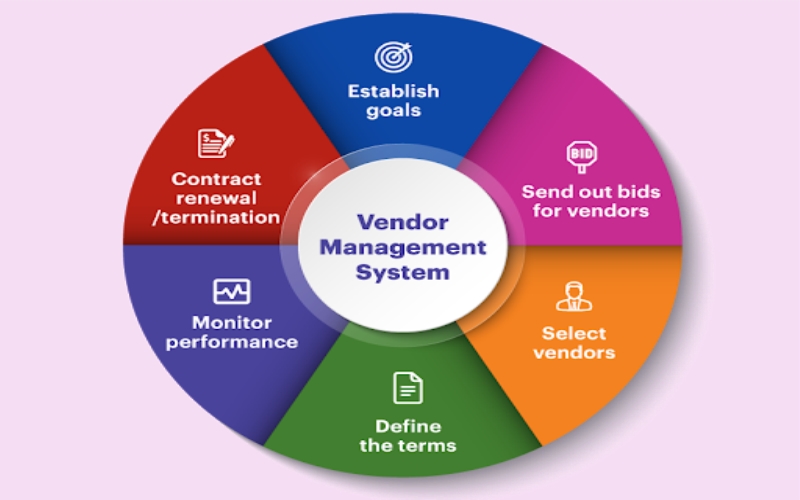In the world of business, the way you juggle your vendors is no small task. It’s the main gig, the secret sauce, the game-changer. And like any mind-blowing secret sauce, the recipe needs to be spot on. That’s where strategic vendor management (SVM) comes into play. Picture your vendor as a one-trick pony. With SVM, this pony morphs into a Swiss Army knife, tackling multiple tasks simultaneously. The result? You’re saving some serious dough and even shielding your operations from those pesky cyber threats.
Breaking it Down: Vendors and Suppliers – The Dynamic Duo
Before we get stuck in, let’s clear up a bit of confusion that’s been doing the rounds. No, vendors and suppliers aren’t long-lost twins. They’re more like two halves of a whole, serving unique roles but working towards a common goal. Picture vendors as the wizards behind the curtain, pulling strings to deliver your masterpiece to an eager audience. Meanwhile, suppliers are the ones in the spotlight, providing you with the raw materials so you can create your very own magic. Both are MVPs in your corporate arena, deserving your careful consideration, strategy, and some top-notch management.
Your Five-Step Guide to Success
Sourcing the Right Partners: As part of your vendor management strategy, you should be on the prowl for the best vendors. Start by scoping out the big hitters in their industry, much like you’d scout for talent in a fantasy football draft. Once you’ve shortlisted the standouts, invite them for a Request for Proposal (RFP). This is their chance to shine, to show you their worth. It’s all about finding the right fit – the vendor that meets your needs without blowing your budget.
Sealing the Deal: Contract Negotiation Now, this is where the rubber meets the road. Contract negotiation is like a dance, and it pays to take your time and get the steps right. This contract is the golden rule book for your future journey with your chosen vendor. It’s also your lifeline, helping you sidestep cyber threats by mandating best practices and standards.
Setting the Stage: Onboarding Once you’ve cherry-picked your perfect vendor, it’s time to roll out the welcome mat. Square away the paperwork to ensure those payments go out like clockwork. Also, equip them with a nifty guidebook (read: cybersecurity training) to get them up to speed with your company’s policies.
Performance Review: Vendor Performance Keep your eyes peeled on how your new partner performs – how they serve, how they deliver, how they meet deadlines. Think of yourself as the coach, setting clear goals and KPIs and working side-by-side to knock them out of the park. This constant monitoring is your compass when it comes to making crucial decisions like renewing contracts.
Dodging the Pitfalls: Risk Management Here’s the part where you channel your inner boy scout and be prepared. Have a backup plan in case your vendor drops the ball. Run a thorough cyber risk check on your vendor to avoid falling into any potential IT traps. And remember, risk management isn’t just a one-way street. It’s a win-win deal that safeguards both you and your vendor, fostering a smooth and successful long-term relationship.
BONUS TIPS: Sprucing up Your Strategy
- Double Down on Communication Good communication is the bedrock of any successful relationship, even in the corporate world. Maintain regular and clear conversations with your vendors. Ensure expectations, feedback, and improvements are communicated effectively. It’s like keeping the lines of a phone open – when it rings, both ends need to answer.
- Keep an Eye on the Market Stay informed about market trends. You might find new vendors offering innovative solutions or existing vendors updating their services. It’s like watching the weather report before stepping out – you’ll know when to carry an umbrella.
- Stay Ahead with Tech Adopt the latest tech to streamline your vendor management process. It can help automate mundane tasks, saving your valuable time for strategic decisions. It’s like upgrading from a flip phone to a smartphone – life just becomes easier!
- Build Trust and Respect Lastly, trust and respect should be at the core of your vendor relationship. Celebrate their successes, understand their challenges, and work together to resolve conflicts. It’s like nurturing a garden – with the right care, your relationship will flourish.
Wrapping it all up, the art of managing vendors is similar to leading a magnificent orchestra. It’s all about finding the right talent, setting the perfect rhythm, and skillfully coordinating to produce a harmonious business symphony. With strategic planning, consistent communication, keen market awareness, up-to-date tech adoption, and a firm foundation of trust and respect, you’ve got all the ingredients for a stellar vendor management strategy. Remember, your vendors are more than just partners in business; they’re instrumental in transforming your company into a masterful performance. So, let’s march to the beat of success and create some vendor management magic!

